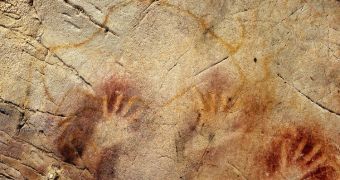Using a study technique called uranium-series dating, researchers in the United Kingdom, Portugal and Spain have determined that 50 paintings found in 11 caves scattered throughout northern Spain are the oldest in the world. The debate now focuses on whether they were drawn by modern humans or Neanderthals.
El Castillo cave, for example, holds paleolithic paintings that are at least 40,800 years old, which means that they were made long before Homo sapiens replaced Neanderthals as the dominant species in what is now Europe.
A paper detailing the caves that were analyzed, as well as how the dating technique was applied, appears in the June 14 issue of the top Journal Sciences. Researchers were led by Dr. Alistair Pike, from the University of Bristol, in the UK.
One of the main implications of the new study is that cave art was practiced in Europe up to 10,000 years earlier than first established. The locations analyzed included the UNESCO World Heritage sites of Altamira, El Castillo and Tito Bustillo.
Using funds from the UK Natural Environment Research Council (NERC), scientists analyzed the radioactive decay of uranium contained in tiny stalactites that formed on top of the paintings. Carbon dating could not be used because the ancient artists used no organic pigments.
The Spanish cave drawings are between 5,000 and 10,000 years older than the oldest cave paintings found in France. In one cave, called Altamira, researchers found signs that ancient humans visited the location over the course of more than 20,000 years.
“Evidence for modern humans in Northern Spain dates back to 41,500 years ago, and before them were Neanderthals,” Dr Pike explains. He adds that the development of art is strongly correlated to the evolution of modern cognition and symbolic behavior in humans.
“Our results show that either modern humans arrived with painting already part of their cultural activity or it developed very shortly after, perhaps in response to competition with Neanderthals – or perhaps the art is Neanderthal art,” the expert adds.
The emergence of various art forms can also be associated with the development of language, a trait that significantly helped our species take dominance over other creatures all around the planet.
“We see evidence for earlier human symbolism in the form of perforated beads, engraved egg shells and pigments in Africa 70-100,000 years ago, but it appears that the earliest cave paintings are in Europe,” Dr. Pike adds.
“One argument for its development here is that competition for resources with Neanderthals provoked increased cultural innovation from the earliest groups of modern humans in order to survive,” he concludes.

 14 DAY TRIAL //
14 DAY TRIAL //